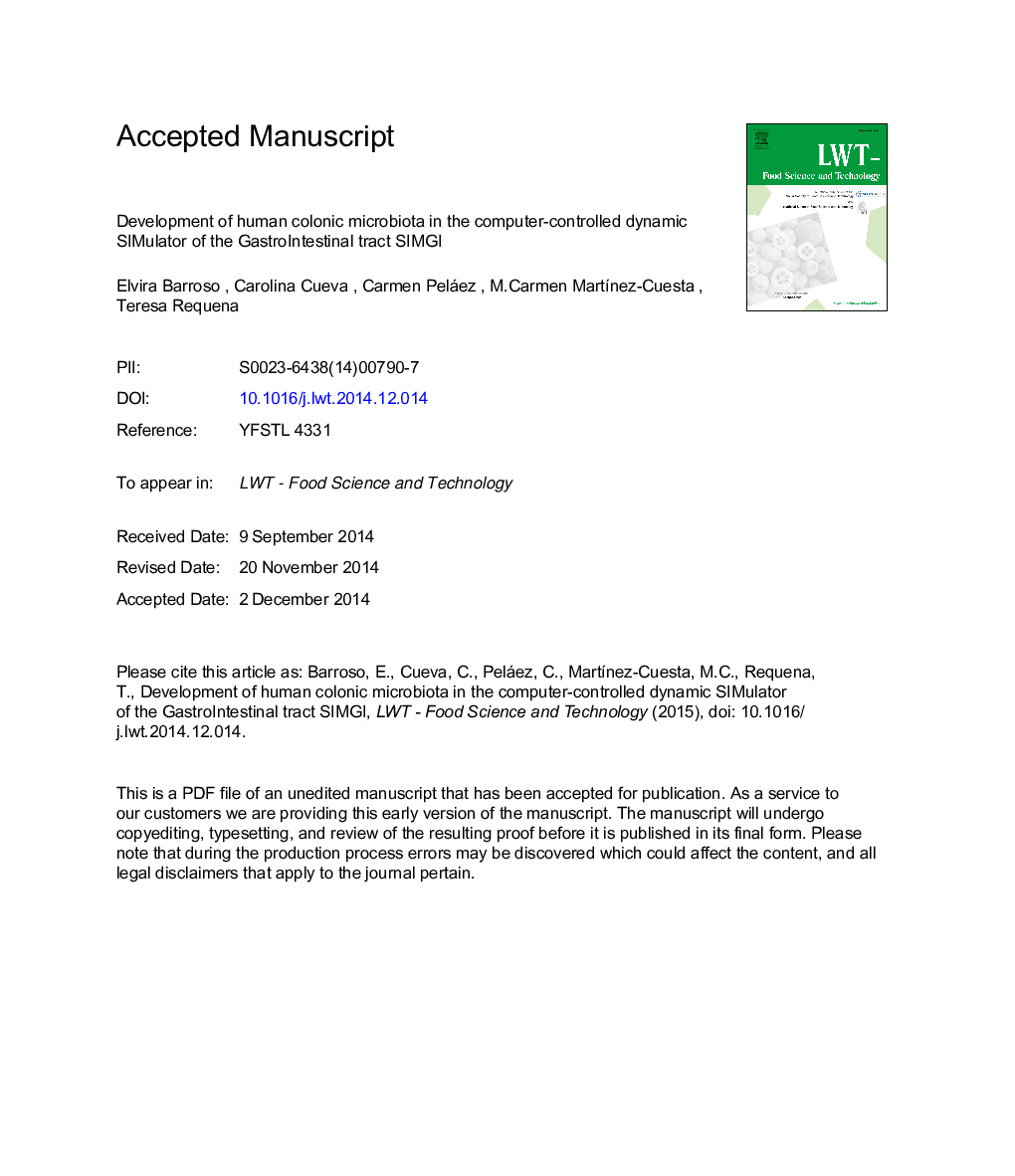| Article ID | Journal | Published Year | Pages | File Type |
|---|---|---|---|---|
| 6401125 | LWT - Food Science and Technology | 2015 | 27 Pages |
Abstract
This study presents a computer-controlled dynamic SIMulator of the GastroIntestinal tract, SIMGI, which was designed to simulate the complete processes of digestion and fermentation. The system includes three-stage culture reactors intended to simulate in vitro the microbial conditions of different regions of the human large intestine. The evolution and composition of the microbial community in the ascending (AC), transverse (TC) and descending colon (DC) vessels was evaluated by PCR-DGGE and quantitative PCR. An overall decrease in counts of Bifidobacterium and Prevotella and an increase of Enterobacteriaceae was observed between the inoculation with human faeces and the bacterial community stabilized in the colon vessels. Regarding microbial differentiation, Bacteroides counts were more representative of the AC and TC vessels than the DC compartment. Within the butyrate producer groups, a low occurrence of Clostridium leptum and Ruminoccocus was observed in the AC compartment. The net SCFA production was highest in the AC compartment, whereas the ammonium levels indicated that proteolysis occurred similarly throughout the entire colon compartments. The results observed in the in vitro model SIMGI indicate that it can be used as a tool for studying the effects of diet or food components on modulating the gut microbiota and its metabolic activity.
Keywords
Related Topics
Life Sciences
Agricultural and Biological Sciences
Food Science
Authors
Elvira Barroso, Carolina Cueva, Carmen Peláez, M. Carmen MartÃnez-Cuesta, Teresa Requena,
